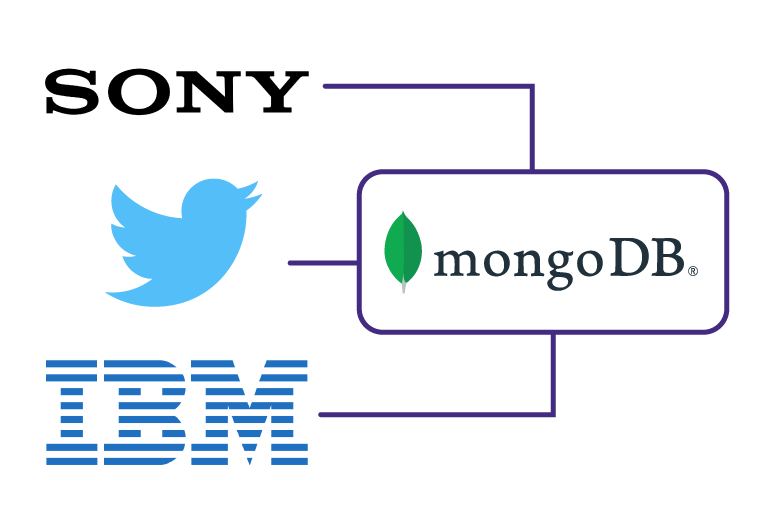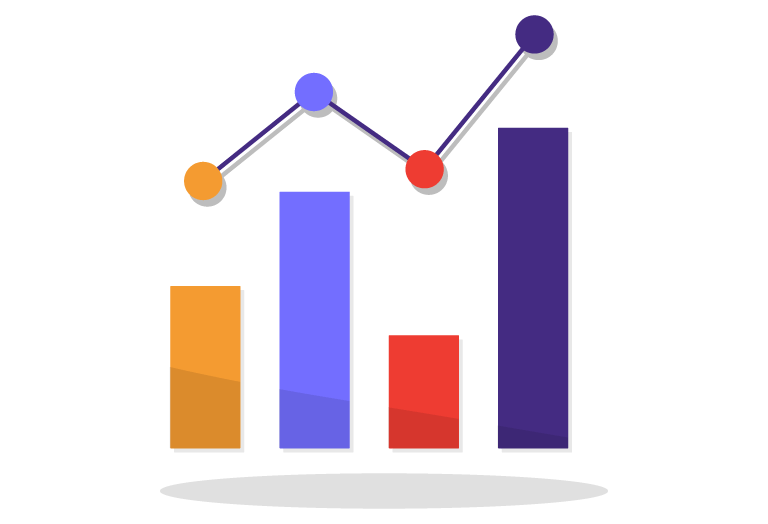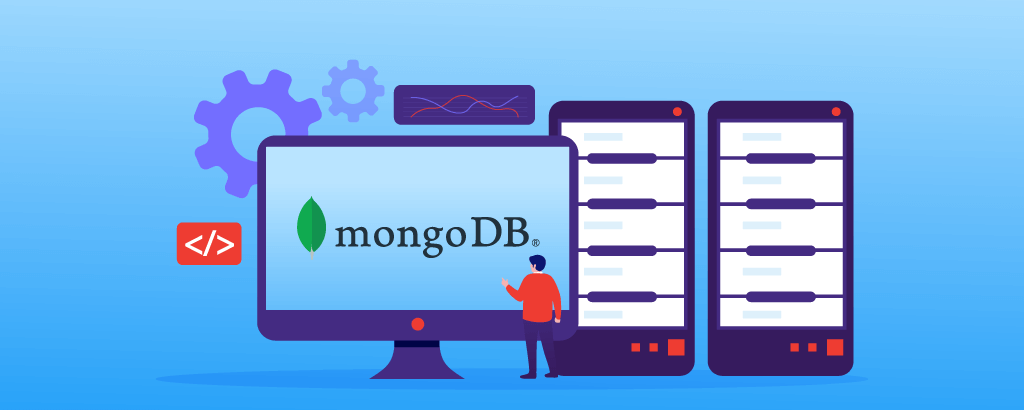Why is MongoDB the talk of the marketplace?
Getting the right database carries equal weight as writing clean code and making your user interfaces attractive. If your app isn’t capable of retrieving, processing, and delivering the information timely it simply gets off on the wrong foot. Maybe you are just starting off with a brand new application or looking to switch to a better database management system (DBMS), either way, you have a whole array of about 300 DBMS to choose from.
The task doesn’t seem that easy, isn’t it? While you might neatly divide between the SQL and NoSQL databases with extra points for NoSQL options, the question remains: Which one is the best possible choice? Hands down, we go with MongoDB. And here are our claims to help you through your decision-making process.
What is MongoDB and how it came to be?
MongoDB is an open-sourced NoSQL database written in C++ that stores data as JSON-like documents, unlike the tables in Relational Databases (RDBMS). All these documents are self-describing. A change made by adding new fields or deleting the existing ones in a single document will not affect others. Now, let’s get into a little bit of history! MongoDB came into the picture as a deviation from the “one size fits all” formula of relational databases. While RDBMS was exceptional in its own way, it somehow wasn’t prepared for the next-gen modern web apps that the Internet would impose. These apps needed a database that scaled horizontally as opposed to the vertical scale that was popularised by relational databases.
of history! MongoDB came into the picture as a deviation from the “one size fits all” formula of relational databases. While RDBMS was exceptional in its own way, it somehow wasn’t prepared for the next-gen modern web apps that the Internet would impose. These apps needed a database that scaled horizontally as opposed to the vertical scale that was popularised by relational databases.
MongoDB was the answer to the complex production deployments raised by relational databases. And in 2007, it bloomed as the brainchild of the New York-based company, 10gen, which is the MongoDB Inc that we see today. Although it was initially provided as a PAAS (Platform as a Service) database, it was later open-sourced in 2009. Well, in no time Mongo DB exploded into popularity as it stood to uphold the developer-first approach with bottom-up production adoption strategies.
It also successfully took to the clouds with MongoDB Atlas. This was indeed a blessing that rid those nightmares that kept developers awake while deploying and scaling a database. For the versatile database that MongoDB proves to be, about 4000+ companies have put it to use- including IBM, Twitter, and Sony. Today, we see MongoDB with Atlas gearing up towards uncharted territories of both web and mobile app development spaces.
Crossing Swords: MySQL vs MongoDB
The discussion on MySQL vs MongoDB will closely resemble a tug-of-war between two strong opponents. Both databases enjoy the status of free and open-source software. While the former has been holding the lead as a relational database for a very long time, the other has aligned to the scalability and diversity in the market. But this looks like the tip of the iceberg. Here, we’ll get your fundamentals down to decide who wins this cut-throat competition!
My SQL & MongoDB Development: The Key Difference
This very popular and long-standing open-source relational database was originally owned by MySQL AB and at present lies in the hands of Oracle Corporation. Being an RDBMS, the data in MySQL is organized into tables and accessed using the query language, SQL (Structured Query Language). With MySQL, you need to pre-define a schema to control the relationships between the fields in your tables. Minute changes made in the schema should be migrated and can pull the database offline. When this happens multiple times it highly interrupts the performance and horizontal scaling becomes a challenge.
Turning the tables to MongoDB is a sort of relief in terms of speed, efficiency, and storage capacity. We just mentioned MongoDB storing its data in the format of key-value pairs as documents. This has come down as a huge benefit as it gets rid of the schema system in relational databases like MySQL, allowing to freely change the structure.
Comparison Checklist!
No. 1 Querying Language
MySQL: Structured Query Language (SQL) is the querying language used to operate MySQL, just as the name indicates. Since this is the standard language that works on relational databases, the same applies to MySQL too. It serves two purposes- (i) controlling data access and (ii) creating and modification of database schemas. SQL uses a set of commands like ‘SELECT’, ‘INSERT’, and ‘DELETE’ to query the data.
MongoDB: Like MySQL, MongoDB does not use a structured query language. But why not? With respect to the document-oriented structure, building a query in JSON documents using SQL will need a number of extensions to handle it elegantly. So, instead, it uses NoSQL, which is not another form of SQL, but simply means that it relies on numerous drivers that facilitate interaction with other languages like C/C++, Go, .NET, Node.js, Perl, PHP, and so on.
No. 2 Schema Flexibility
MySQL: As with MySQL, you have a rigid system of defining columns and tables before you store anything. When the schema design is fixed and immovable, there is very little room for flexibility in MySQL. You need to change the schema design every time a little modification is made.
MongoDB: One of the MongoDB architectural best practices is the lack of a specific schema definition. You get the liberty to store as many documents as you wish in a collection without any relation between them. The schema generated is only temporary and will last only as long as the connection is maintained. Starting a new connection to the database implies a different schema definition. Hence, allowing for flexibility. And this is also an add-on to the benefits of MongoDB because a flexible schema is always better at storing complex data structures like nested arrays and so on.
No. 4 Speed and Performance
If you are dealing with considerably small data with lesser volume, MySQL will be a sufficient choice. On the other hand, the performance of MongoDB can be a huge blessing while dealing with large mounds of unstructured data. It is quite sensitive to workload and achieves faster development speeds.
These are just four of the many other indicators that are used to compare the brilliance of these two databases. Even when other aspects such as security, replication, sharding, cloud-based computing, and integrity models such as ACID & BASE are compared MongoDB performs in better way than MySQL. However, there is no standard benchmark that decides the best database for you. This can only be determined based on your project requirements, but if you have interesting insights to find from your data, then MongoDB is the trendy database to be in line with.
Insights from the MongoDB Trends Reports: Unveiling Key Findings
The MongoDB Trends Report for 2020 is here to give you a wider perspective on the adoption and usage of this best-loved database. Basically, it’s a result of a series of online surveys collected between 2017 and 2020 analyzing MongoDB patterns of growth. The data gathered cannot be ignored by any means as it comes plainspoken by developers, system architects, DevOps engineers, and entrepreneurs, all using MongoDB in production. The growth of MongoDB looks like it has a wolf in its belly. Firstly, during the course of three years -from 2017-20, MongoDB users with larger databases have shot up to about 9% from 3%.
2017 and 2020 analyzing MongoDB patterns of growth. The data gathered cannot be ignored by any means as it comes plainspoken by developers, system architects, DevOps engineers, and entrepreneurs, all using MongoDB in production. The growth of MongoDB looks like it has a wolf in its belly. Firstly, during the course of three years -from 2017-20, MongoDB users with larger databases have shot up to about 9% from 3%.
Developers are almost delighted with MongoDB that they have abandoned using SQL databases altogether or only use MongoDB in their set of NoSQL databases. The report also claims that MongoDB is better suited for the scale-out nature of the cloud making its way up there faster than relational databases. It’s also interesting to note that 20% of MongoDB users are already ardent cloud users, while about 41% of them have plans to soon move into cloud-hosted MongoDB service.
MongoDB Atlas is also on the very good ground contributing 39% of MongoDB revenue as of 2020. And the surprising part is that the paid tier of Atlas is the one running at breakneck speed. All thanks to MongoDB architectural best practices and MongoDB Inc which was capable of thought.
Why is Pattem Digital your ideal MongoDB Development company?
Pattem Digital, as a MongoDB development company, accelerates your innovation by making complete use of the powerful MongoDB database. Our field experts have helped businesses strategize, build, and implement MongoDB development services and solutions for years now. If web applications capable of handling massive amounts of data are standing in the way of your expansion process, we are just a call away! Empowering and assisting you is our pleasure.


